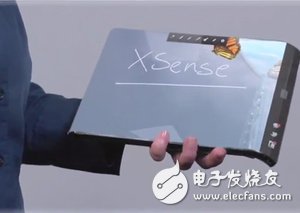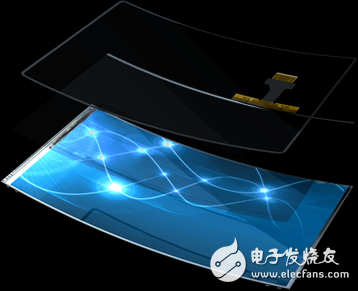When multi-touch took off in 2007, Atmel could not keep up with this trend, and it was not until two years later that the first capacitive multi-touch controller was launched. Even with the product, Atmel is still quite low-key, everyone only knows that Atmel has entered the market with its own charge transfer method capacitor technology and is mainly focusing on the high-end brand market, but how is the thing done, even in Taiwan, where the touch is "in power" They are not very clear.
Gradually, there are more and more news of Design-win. Today, at the Computex 2013 pre-show press conference, a whole row of application cases from mobile phones, tablets to laptops, all of them are kings or topic machines, such as Galaxy S3, Microsoft's Surface Pro / RT, Google's Nexus 10, etc. Now it is not an exaggeration to say that Atmel is a brother of touch IC.

Drawing: Atmel proposes ITO alternative material-Xsense technology
Atmel can stand this position, its technical strength is undoubtedly the main reason for its affirmation by the market. Compared with other solutions that need two to three chips in the current market, the maXTouch T series of mXT2952T released by Computex this year, it is the first to support a single chip that can support 15.6 inches and Windows 8 certified touch The controlled screen can be optimized to support a thickness of 0.4mm.
In addition, what about mutual capacitance and self-capacitance sensing architecture? This matter has been debated in the touch industry for a long time, because the two have their own advantages. At present, the consensus of the touch industry is to move towards a structure in which the two coexist. Of course, Atmel is no exception. Its full range of maXTouch T supports mutual capacitance and self-capacitance automatic adjustment sensing architecture.

Huang Tianhua, senior marketing manager of Atmel's touch technology business department, pointed out that mutual capacitance can achieve true multi-touch tracking; self-capacitance is suitable for providing idle power consumption, anti-humidity capability, tracking with gloves, and detection of contact Hanging function of fingers or objects touched by the control screen. The company's touch products can automatically select the best sensing architecture according to the type of application and achieve seamless switching to achieve higher performance and lower power consumption.
Other anti-noise capabilities, such as support for active styluses and sensor hubs (Sensor hub) and other technical advantages, not to mention, here want to inking more (although details are not obtained much) is Atmel's Xsense technology.
In the touch architecture, the transparent conductive sensing layer of ITO (indium tin oxide) is the key component, but for some reasons, the industry is looking for alternative materials, such as: (1) indium is a rare material; (2) ITO is used The larger the area, the higher the surface resistance and the less sensitive the sensing; (3) ITO is brittle and not suitable for flexible applications with flexibility.
In recent years, there have been many substitute materials for ITO, such as graphene, carbon nanotubes, and silver nanowires, which have their own advantages and disadvantages, but it is always difficult to cross the threshold of mass production. Xsense proposed by Atmel is also a method of ITO replacement material, known as Metal Mesh (metal mesh) in the industry, the company is called FLM (Fine-line Metal), using extremely thin copper metal wire. In order to prevent the metal wire from being seen by the naked eye and not shading, this copper wire must have a line width of 5-10 μm, which makes capacitive sensing quite difficult, and is also a sensing requirement that is difficult for general touch ICs to meet .
No one else can do it, Atmel did it. This is the necessary condition to be a brother in the market.
In the next step, Huang Tianhua is also optimistic about the design architecture of the On-cell technology introduced on the IPS panel: "Compared to In-cell, this architecture allows the panel and touch sensing to work independently, greatly reducing the difficult noise problem. In terms of cost, thickness and yield, they are quite advantageous. "Because Samsung ’s AMOLED touch function uses Atmel ’s On-cell technology, I believe it ’s not too difficult to cut into the IPS field.
More details about XSense technology
   Atmel releases innovative XSense flexible touch sensor
   Atmel teamed up with Asus, XSense technology to help CES 2013
   Atmel XSense flexible touch sensor wins CES 2013 Innovation Award
Led Panel Light,Led Panel Lamp,Smart Led Panel Light,Led Ceiling Panel Light
Changxing Fanya Lighting Co.,Ltd , https://www.fyledlights.com